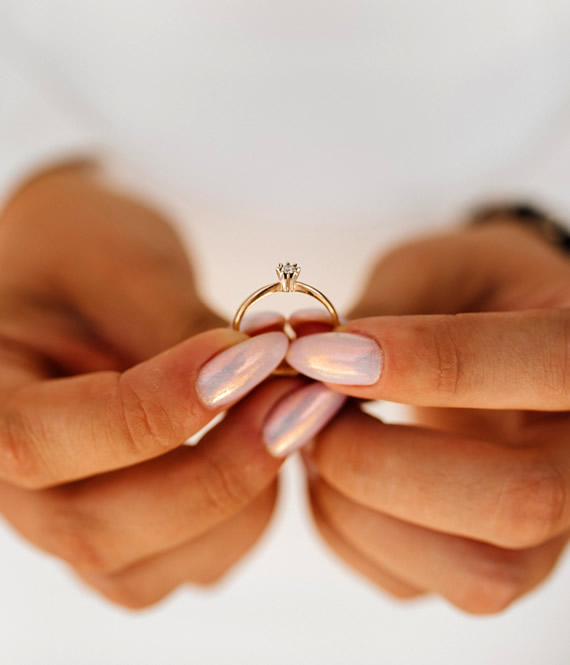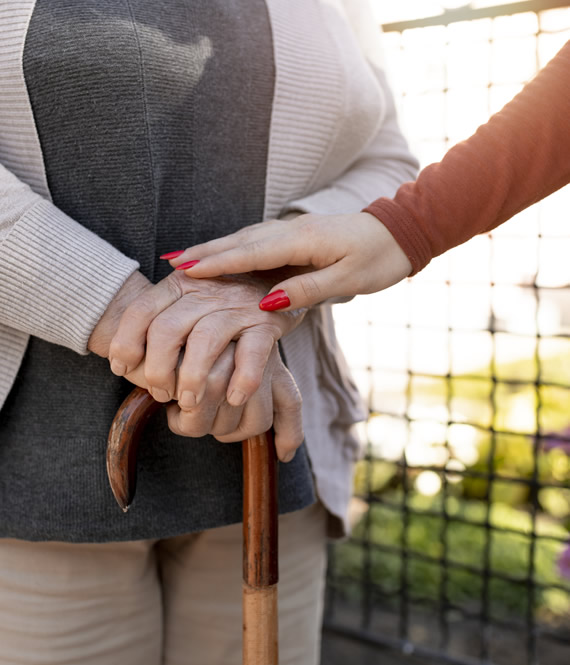
Dismissive Avoidant Attachment: Why DAA Is So Challenging & How To Cope
We recommend helpful products in our articles. Read our full disclosure here. The content on this website is not intended to be a substitute for professional advice, diagnosis, or treatment.
Have you ever fallen for someone so fast, so hard, and then crashed so completely that you wonder what on earth has happened?
Whether it’s a first love or your tenth new fling, when things go wrong it can feel like being punched in the stomach.
A dismissive-avoidant attachment (DAA) relationship is one of those punch-in-the-stomach experiences.
Even if you’re familiar with the concepts of attachment theory, dealing with a partner who has avoidant attachments can leave you reeling.
It’s one thing to read about the five different types of adult attachment relationships… Quite another to have your hopes repeatedly crushed by someone who wouldn’t even know what attachment was if it hit them in the face. Why is DAA so challenging? Let’s take a look at the dismissive avoidant attachment and how it works.
The DAA Dynamic
Attachment is the deep and habitual way we relate to others.
It is not a feeling or an emotion – it is a defensive posture linked to our early experiences.
The “D” in DAA refers to a defensive strategy, not to a feeling. Avoidant attachments use defensive strategies designed to avoid getting too close, getting hurt, and losing autonomy. Dismissive attachments also use defensive strategies designed to stifle or shut down their feelings and emotions.
DAA relationships tend to be emotionally cold and have a feeling of, well, detachment.
DAA partners often struggle to read each other because they don’t know how to “read between the lines”. Instead of being able to comfort each other during times of distress, dismissive and dismissive-avoidant partners can be highly critical of each other.
They might choose not to be together at times when they need each other the most.
What is Dismissive Avoidant Attachment?
Dismissive avoidant attachment is one of the five attachment styles and is defined as the desire to avoid intimacy in romantic relationships. In the presence of a romantic partner, a dismissive individual experiences feelings of indifference, lack of interest, and a general lack of concern. A dismissive person wants to feel in control of the relationship and feels incapable of being hurt.
They are afraid of being too dependent on their partner, or of being controlled by their partner.
A dismissive person does not have a conscious desire to break up a relationship (or to be insensitive/inconsiderate).
Instead, their desire for control causes them to behave in a way that is not helpful for the relationship.
In order to break the cycle of dismissive behavior, a dismissive person must first become aware of their desire for control and learn to manage their emotions.
The DAA Consequences
- DAA partners may feel unhappy in a relationship and not stay together very long;
- The dismissive partner might get bored and want to break up;
- The avoidant partner might feel too humiliated to stay together;
- When someone is dismissive, they often turn on their partner and blame them for how they feel;
- When someone is avoidant, they are likely to withdraw and say nothing, making them hard to reach;
- Dismissive avoidants may turn on you because they can’t stand the thought of feeling hurt;
- They can be highly critical and dismissive of your ideas, feelings, and even your body;
- Dismissive avoidant partners can be warm and charming, but when things go wrong, they are often critical of their partner and blame them for their distress, which can make it very hard for the partner to self-soothe.
DAA and The Problem Of Childhood Trauma
It’s not uncommon for people to date the same type of person over and over again. Repeating patterns from the past, we are often drawn to people who trigger unresolved issues from childhood.
People with dismissive avoidant attachment often have a history of unresolved early attachment trauma.
They may have been separated from their primary caregiver for long periods of time, or they may have suffered some kind of emotional or sexual abuse.
They may have felt overly responsible for their parents and had to give up their own needs.
They are likely to have grown up in an environment where feelings were not discussed, feelings were negotiable or harshly condemned.
Dismissive avoidants tend to have experienced a great deal of shame about their feelings as children, which makes them feel unworthy of intimacy as adults.
Feelings and Thoughts In Dismissive Avoidant Attachment
If you have fallen for someone who uses dismissive or avoidant strategies, you may be feeling confused, angry, frustrated, or depressed.
You may be experiencing a lot of “if only” thoughts, such as:
- “if only my partner would talk to me”;
- “if only my partner would show up”;
- “if only my partner would give me a chance”.
Do you notice your significant other using dismissive or avoidant strategies (emotional coldness, avoidance of intimacy, unwillingness to talk about the issues)?
It’s important to recognize that this is the way your partner communicates, but it is not a reflection of your worth. Your partner is not intentionally trying to hurt you – they are simply relating in a way that feels comfortable to them.
6 Signs You Have Dismissive Avoidant Attachment
Dismissive attachment is an uncommon form of insecure attachment.
It is a maladaptive reaction to early caregiver relationships that continues into adulthood.
People with dismissive avoidant attachment in adulthood tend to avoid intimacy and are not interested in forming romantic relationships or friendships.
If you recognize these red flags in your own behavior, you might have dismissive attachment tendencies.
Here are six signs you may have dismissive avoidant attachment style.
1. You struggle to trust others
Trust is a critical component of healthy relationships, both romantic and platonic.
For example, in romantic relationships, trust is important for allowing yourself to fall in love and be vulnerable.
If you have difficulties trusting others, you may struggle with letting go and opening up to someone.
In addition, if your partner has a history of lying or engaging in other toxic behaviors, it may be especially hard for you to trust them.
In order to have successful relationships, we need to learn to trust others.
If you have a hard time trusting others, it may be because your parents/caregivers or other influential people broke your trust in the past.
2. You have difficulty expressing your emotions
Generally, people with dismissive avoidant attachment feel uncomfortable being emotionally intimate with others.
You may have difficulty recognizing and naming your emotions, as well as expressing them through words or in other ways.
It may feel uncomfortable for you to cry, hug, or otherwise show emotion towards others.
This can have a negative effect on your relationships, as others may not understand why you don’t show your emotions.
3. You feel uncomfortable being physically close to others
People with dismissive avoidant attachment often avoid being physically close to others (think hugging and holding hands).
This can be especially true in romantic relationships.
If you have a dismissive attachment, it may be difficult for you to initiate physical touch with your partner.
You may also find yourself pulling away when your partner tries to hold you or be physically intimate with you.
This can leave your partner feeling disconnected and confused.
4. You find it difficult to commit to romantic relationships
People with dismissive avoidant attachment have a hard time committing.
This can be due to a few different factors:
- First, people with dismissive attachment don’t really believe in love or feel comfortable in intimate relationships.
- In addition, they have trouble with commitment, as they may often be unsure of what they want.
If you have a dismissive attachment, you may find yourself in a romantic relationship but consistently pulling away from your partner.
This can leave your partner feeling confused and even hurt.
If you have a dismissive attachment, you may want to work on ways to commit to romantic relationships.
5. You have a hard time forming friendships
People with dismissive attachment often have a hard time forming friendships too.
For example, people with dismissive attachment tend to have a hard time sharing their emotions with others, which may make it challenging to form close friendships.
People with DAA also often have a negative view of themselves, which can make it challenging to form friendships.
Dismissive Avoidant Attachment: How to Break Free
So, what if you find yourself in a relationship like this?
How can you break free from this pattern and build healthy relationships?
1. Know Your Triggers
When you’re in a toxic relationship, identifying your triggers can be a helpful way to start healing and change.
Some common triggers for dismissive avoidant attachment include:
- Physical intimacy. You may find that you feel uncomfortable or unsatisfied during or after sex.
You may feel shame or disgust at your body or your sexual needs.
- Receiving affection. You may find that hugs, hand-holding, and other signs of affection make you feel smothered or out of control.
- Emotional openness. You may struggle with sharing your feelings, even when they are positive.
You may worry that your partner will “take advantage” of your emotions and try to guilt you into the things you don’t want to do.
2. Rebuild Broken Trust
Trust is a fragile creature.
Once broken, it can be incredibly difficult to repair.
In avoidant attachment relationships, trust is almost impossible to repair.
The more you try to regain the trust of your partner, the more may feel rejected.
The more they will feel smothered and controlled.
Just like in any other relationship, though, trust can be rebuilt with time and patience. You just need to work on things at your own pace.
You may not be ready to jump into a romantic relationship after a bad breakup, but you can still make new friends and learn to trust again.
You should also remember that trust is not “all or nothing”. You don’t have to be best friends with your partner or put all your secrets out on the table at once.
You can build trust with your partner a little bit at a time.
3. Finding New Relationships
If you find yourself in a breakup situation, it is tempting to dive headfirst into another relationship.
You may feel like you can’t cope on your own or that you need someone to nurse your broken heart.
But rushing into another relationship too soon can actually make you feel worse.
The problem is that any relationship, whether it’s new or has been going on for a while, takes energy.
If you don’t have the energy to maintain the new relationship, you risk falling back into your old dismissive avoidant attachment pattern.
Conclusion
Dismissive avoidant attachment relationships are tricky.
They can start out as completely normal relationships and then slowly become more and more unhealthy.
When you are in one of these relationships, it can be difficult to see a way out.
But there is hope.
You can break free from this pattern and find healthier relationships.
By knowing your triggers, rebuilding broken trust, and finding new relationships, you can overcome this attachment style and create healthy, happy, loving relationships.
If you find it hard to navigate this issue on your own, please know that this is something a professional can help you with too.
Scroll down for more content below.
"We love to research problems, examine studies, analyze solutions, and share with you ideas that make life healthier. You can learn about us and our editorial standards here. Have suggestions or feedback to share? Send us a message!."













Leave a Comment